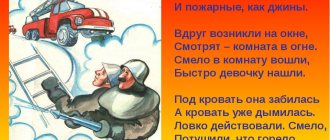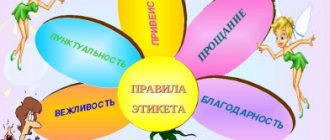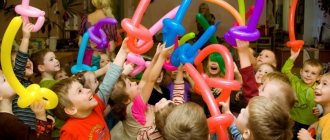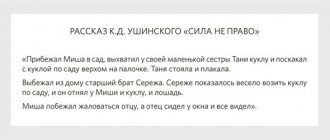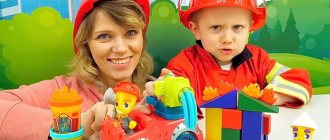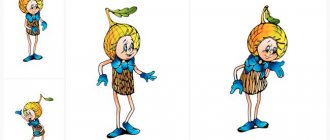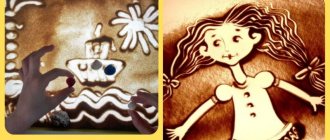Fire safety rules for children
Every year, children under fourteen years of age are killed or seriously injured in fires and fires. The main reason can be called the dishonesty of parents, as well as the lack of knowledge and skills to behave in case of fire. To prevent fire safety, it is necessary to conduct lessons, conversations, and lectures.
It is recommended to consolidate the result with the help of games that help update the information received. Cartoons developed with the support of the Fire Service will help explain fire safety rules to young children (“Fire in the forest”, “Fire in the apartment”, “Rules of behavior for children in case of fire”).
Fire safety rules will be explained during life safety lessons, as well as during class hours on this topic. The use of poems by S. Marshak “Very, very important rules!”, “Song of Matches”, A. Usachev “Fire”, E. Gladkova “If there is a fire in the house” and others will help in this.
Basic fire safety rules for children
- You cannot play with matches, lighters, or match-candles;
- You cannot set fire to dry leaves, dry grass, trees, or poplar fluff;
- You cannot play with fireworks, sparklers, or firecrackers without adult supervision;
- You cannot use gasoline, kerosene and other flammable materials for gaming purposes;
- Do not throw bottles of deodorants, perfumes, air fresheners, etc. into a fire or set fire to them. This may result in an explosion and immediate fire;
- You cannot make a fire or play with an open fire indoors;
- You cannot make a fire in wooden sheds, dilapidated buildings, basements and attics;
- if there is a need for light, it is better to use a flashlight than matches;
Fire safety competition program. Primary School
Fire safety event for primary school students “You can’t joke with fire!”
Goal: Formation of the basics of fire safety for schoolchildren. Objectives: teach children to act correctly in emergency situations; consolidate knowledge of correct behavior in case of fire; instill skills in careful handling of fire. Planned results: Subject
- remember the basic rules of fire prevention, learn to call firefighters by phone, characterize fire hazardous objects, get acquainted with the profession of a firefighter,
meta-subject:
learn to understand the educational task and strive to complete it, plan your action in accordance with the task, establish cause-and-effect relationships connections, generalize and draw conclusions, ask questions, control yourself and your comrades,
personal:
work in groups, in pairs, talk about the purpose of fire safety items, formulate conclusions from the material studied, answer final questions. Equipment: multimedia installation, presentation “Fire Safety”, cards with tasks for independent work; riddles, proverbs, poems about fire, about fire; a fire safety inspector and a medical worker were invited.
Progress of the game.
Today we will talk to you about a very important and relevant topic for all of us.
Guess the riddle: “The red beast is sitting in the oven, the red beast is angry with everyone.
He eats firewood out of anger for a whole hour, maybe two. Don’t touch it with your hand, it will bite your entire palm” (fire) What do you think will be discussed at our event today? During the event: We will get acquainted with the basics of fire safety, the causes of fires, learn to follow fire safety rules and act correctly in the event of a fire II.
Main part Presenter 1. Fire is a long-time friend of man. With its help, many useful things are accomplished. But sometimes it happens that fire turns from a faithful friend into a merciless enemy, destroying everything in its path. The power of fire is great. It takes millions of human lives, wipes out big cities and small villages from the face of the earth. Today, about five and a half million fires occur annually on our planet. Every 5 seconds there is a new fire. Enterprises and hospitals, trains and planes, forests, fields and houses are burning. The result is colossal losses. And most importantly, tens of thousands of human victims, including children. 3. Causes of fires Guess the riddle: Oh, these little sisters are dangerous...(matches) _ Why are matches dangerous? Presenter 2. Don’t play, my friend, with a match. Remember, it’s small, But a small match can burn the house to the ground. Younger brothers and sisters and preschoolers are told: “Remember that matches are not a toy for children!” 4. Why is fire dangerous? -How dangerous is a fire? - Why might a fire occur? 5. Rules of conduct in case of fire What if a fire does occur? Firefighter's story: What are the rules of behavior in case of fire. ___________________________________________________________________________________ “If the fire is small, you can try to put it out immediately by throwing, for example, a thick cloth, a blanket, or pouring a pan of water over it. BUT REMEMBER: DO NOT extinguish live appliances with water, as well as gasoline, kerosene and oil. If the fire does not go out immediately, immediately run away from the house to a safe place. And only after that, call the fire department. If you cannot escape from a burning apartment, immediately call “01” and tell the firefighters the exact address and number of your apartment. After that, call neighbors and passersby for help from the window. In a fire, smoke is much more dangerous than fire. Most people in a fire die from smoke. If you feel like you are suffocating, squat down or crawl towards the exit - there is less smoke below. If possible, breathe through a wet cloth. If there is a fire in the entrance, never get into the elevator. He may shut down and you will suffocate. Call “01” or ask your neighbors about it. Presenter: Now we will play a game with the guys, during which we will find out whether the guys know the fire safety rules, and we will practice some techniques for dealing with a fire. The motto of our game will be the words of V. Mayakovsky “We firmly need to remember - Fire does not arise on its own!” “Business card” 1. “FLIGHTS” Our motto: “Fire is a dangerous thing He doesn’t like jokes on himself” 2. “FIREMEN” Our motto: “Remember, friends, that you can’t joke with fire.” Host : I present to you the jury that will evaluate each competition. ______________________________________________________________ ______________________________________________________________ _______________________________________________________________ Introduction to the competition program Competition No. 1 “Warm-up” Guess the riddles: 1) In a small barn they keep 100 fires (Matchbox) 2) Hisses and gets angry, afraid of water. With a tongue, but does not bark, Without teeth, but bites (Fire) 3) Where people are careless with fire, It will definitely be (Fire) 4) I saw smoke, don’t yawn, Call us quickly (Firemen) 5) A midge was flying, an aspen leg She sat on a haystack and ate all the hay (Match) 6) I am shaggy, I am shaggy, I am above every hut in winter, Above the fire, the steamboat, I am never without fire. (Smoke) 7) Carbon monoxide smoke billowed out, the room was full of smoke. What does a firefighter wear? What is it impossible to live without? (Gas mask) 8) I’m rushing with a siren to the fire, I’m carrying water with foam. Let's put out the fire and heat in an instant We're quick, like arrows (Fire truck) - During the warm-up, you repeated terms related to fire safety. 2 COMPETITION “Call the Firemen”. Presenter 1 . What will you do if you see fire? (Team responses) Presenter 2. Every citizen must know - Firefighter phone number “01”: If something catches fire, Take the courage: Urgently call “01”, Give the exact address, What’s been burning, how long ago, where. It will rush for a few minutes - the fire department will rush to you and help you in trouble! Imagine that your apartment is on fire, and the fire occurred in a large room from the TV. You need to inform the fire department about this. Before you have the opportunity, be familiar with the questions you'll need to answer during the call. (shows a poster) On the poster. 1. Address: street name, house, apartment, entrance number 2. What is burning and where 3. Floor. How many floors are there in the building? 4. Is there a danger to people? 5. State your last name and first name (Children stand in a column. One by one they run up to the phone, pick up the phone, dial “01”, give the address and run back.) 3rd competition “Going to the fire” Presenter 1 . You called the fire department. How will they respond to your call? (children's answers) Presenter 2. The car is red, there is a siren, a bright light. Always ready in it: Hoses, ladder, water! If there is a fire somewhere, And the heat of the fire is dangerous - They give way to her! Everyone knows this rule. At the signal, team members stand in the hoops, raise them to waist level and move to the opposite side of the gym, running around the pins like a snake. The mission is considered completed if the crew has not lost any of its crew members. Presenter 1. So, the young firefighters arrived at the fire. How many of you know the name of a fire hose that is used to extinguish fires with water? (sleeve) The fire hose should always be in perfect order, neatly rolled into a large “snail”. Captains will take part in this competition. 4 Competition “Combat Deployment” Presenter 1. At a signal, team captains deploy a fire hose (satin ribbon), and then carefully roll it up. The one who completes the task faster wins. Fire ditties 1) We will sing you ditties About firefighters, about fire. Don't take them seriously, otherwise you'll get hit. 2) When you leave home, turn off all appliances, otherwise you will come home from school and there will be nowhere to drink tea. 3) There are many different professions, but one of them is more important. Being a firefighter means saving people from fire. 4) Kolya, Kolya, are you so pale, weak, not yourself? “I forgot to put out the match, I barely made it out alive.” 5) New house - green roof Maybe it won’t burn down: Our firefighter friend Fedya will protect from fire. 6) Open the gate, mom, I’m leading the fireman. He will now teach you how to simmer a frying pan. 7) Who went through fire and water And marked his helmet with copper? This is our brave fireman, If he is nearby, there are no problems. If there is a problem somewhere, There is a lot of smoke or fumes, A fireman will come to you And will douse any fire. 9) If suddenly a fire happens, you, girlfriend, don’t yawn - “01” call quickly and call for help. All: Suddenly there will be a fire at school. We know like twice two: The emergency door will do, We quickly run there. 5th competition “Rescue the Victims” Presenter 1 . Sometimes in a fire it is not so much the fire that is dangerous as the acrid smoke. It stings your eyes and makes it difficult to breathe. Who knows how to behave correctly in a smoky room? When walking through smoky areas, try to overcome them by holding your breath or covering your mouth or nose with a damp handkerchief or towel. But how difficult it is to see the victim in the smoke. Small children often hide from smoke in closets or under beds, making it difficult for firefighters to find them. Now our young firefighters will save not people, but their favorite toys. Each team must squat (“goose-step”) through a “smoky room” to the hoop, breathing through a wet rag. Next you take, i.e. save 1 toy and return to your team. Your task is to save everyone and take them to a safe place. 6 competition “Find the fire” Presenter 1. Sometimes it happens that the fire is located in several places. Firefighters have to “knock” the fire into one place in order to completely extinguish it there. Now the teams will have to gather the fire in one place. Red handkerchiefs are hung throughout the hall - these are hot spots. The task of each team is to put on mittens or gloves so as not to get burned and collect the handkerchiefs in a bucket. The team that collects the most handkerchiefs wins. 7 competition. “Put out the fire” Presenter 1. How do you put out the fire? (water, fire extinguisher). But it happens that you cannot put out a fire with water, and there is no fire extinguisher at hand. Then simple sand is used. Now you and I will put out the fire with sand. Teams, one at a time, run to a hoop containing sandbags and throw them into buckets with red handkerchiefs. The team with the most hits wins. Presenter No. 2 Careless handling of fire leads to burns, unfortunately. Just in case, you need to know how to help with burns. Let's learn this today, following the principle - everything in life will come in handy. ______________________________________________________________________________ Medic. I will tell you what assistance should be provided to the victim if he has received burns. The burned part of the body should be freed from clothing, but if burnt remains of clothing are stuck to the skin, then you cannot remove or tear them off the body: this will damage the skin even more. Special precautions must be taken if the clothing is synthetic, since when it burns it melts and sticks to the skin. To make the process easier, it is better to cut the clothes. Place the burn area under cold water and hold for 10-15 minutes. If blisters have formed at the burn site, under no circumstances should they be opened: this may lead to infection of the burn surface. If blisters appear, apply a sterile bandage. For burns, do not lubricate the skin with any fats or ointments. In case of extensive burns to the body and limbs, the victim should be wrapped in a clean sheet, urgently call an ambulance or taken to a hospital, where he will receive qualified assistance. 8 Competition “Help the Victim” Each team has 1 fire victim. We work in pairs. The first pair puts a bandage on the arm, and the second on the leg. The jury evaluates the quality of the bandages. Competition for fans. Guess riddles about the fire.
Don't take them seriously, otherwise you'll get hit. 2) When you leave home, turn off all appliances, otherwise you will come home from school and there will be nowhere to drink tea. 3) There are many different professions, but one of them is more important. Being a firefighter means saving people from fire. 4) Kolya, Kolya, are you so pale, weak, not yourself? “I forgot to put out the match, I barely made it out alive.” 5) New house - green roof Maybe it won’t burn down: Our firefighter friend Fedya will protect from fire. 6) Open the gate, mom, I’m leading the fireman. He will now teach you how to simmer a frying pan. 7) Who went through fire and water And marked his helmet with copper? This is our brave fireman, If he is nearby, there are no problems. If there is a problem somewhere, There is a lot of smoke or fumes, A fireman will come to you And will douse any fire. 9) If suddenly a fire happens, you, girlfriend, don’t yawn - “01” call quickly and call for help. All: Suddenly there will be a fire at school. We know like twice two: The emergency door will do, We quickly run there. 5th competition “Rescue the Victims” Presenter 1 . Sometimes in a fire it is not so much the fire that is dangerous as the acrid smoke. It stings your eyes and makes it difficult to breathe. Who knows how to behave correctly in a smoky room? When walking through smoky areas, try to overcome them by holding your breath or covering your mouth or nose with a damp handkerchief or towel. But how difficult it is to see the victim in the smoke. Small children often hide from smoke in closets or under beds, making it difficult for firefighters to find them. Now our young firefighters will save not people, but their favorite toys. Each team must squat (“goose-step”) through a “smoky room” to the hoop, breathing through a wet rag. Next you take, i.e. save 1 toy and return to your team. Your task is to save everyone and take them to a safe place. 6 competition “Find the fire” Presenter 1. Sometimes it happens that the fire is located in several places. Firefighters have to “knock” the fire into one place in order to completely extinguish it there. Now the teams will have to gather the fire in one place. Red handkerchiefs are hung throughout the hall - these are hot spots. The task of each team is to put on mittens or gloves so as not to get burned and collect the handkerchiefs in a bucket. The team that collects the most handkerchiefs wins. 7 competition. “Put out the fire” Presenter 1. How do you put out the fire? (water, fire extinguisher). But it happens that you cannot put out a fire with water, and there is no fire extinguisher at hand. Then simple sand is used. Now you and I will put out the fire with sand. Teams, one at a time, run to a hoop containing sandbags and throw them into buckets with red handkerchiefs. The team with the most hits wins. Presenter No. 2 Careless handling of fire leads to burns, unfortunately. Just in case, you need to know how to help with burns. Let's learn this today, following the principle - everything in life will come in handy. ______________________________________________________________________________ Medic. I will tell you what assistance should be provided to the victim if he has received burns. The burned part of the body should be freed from clothing, but if burnt remains of clothing are stuck to the skin, then you cannot remove or tear them off the body: this will damage the skin even more. Special precautions must be taken if the clothing is synthetic, since when it burns it melts and sticks to the skin. To make the process easier, it is better to cut the clothes. Place the burn area under cold water and hold for 10-15 minutes. If blisters have formed at the burn site, under no circumstances should they be opened: this may lead to infection of the burn surface. If blisters appear, apply a sterile bandage. For burns, do not lubricate the skin with any fats or ointments. In case of extensive burns to the body and limbs, the victim should be wrapped in a clean sheet, urgently call an ambulance or taken to a hospital, where he will receive qualified assistance. 8 Competition “Help the Victim” Each team has 1 fire victim. We work in pairs. The first pair puts a bandage on the arm, and the second on the leg. The jury evaluates the quality of the bandages. Competition for fans. Guess riddles about the fire.
1. I am stronger than everyone in the world, I am bolder than everyone in the world, I am not afraid of anyone, I will not submit to anyone (fire) 2. Carbon monoxide smoke began to swirl, the room is full of smoke. What does a firefighter wear? What is it impossible to live without? (gas mask) 3. I’m rushing with a siren to the fire, I’m carrying water with foam. Let's put out the fire and heat in an instant. We're quick, like arrows. (fire truck) 4. The insidious fire will be defeated by the one whose name is... (Firefighter) 5. A coal fell on the floor and lit the wooden floor. Don't look, don't wait, don't stand. And quickly fill it up... (with water) 6. What kind of cramped, cramped house is this? A hundred sisters huddle in it. And any of the sisters can flare up like a fire. Don’t joke with the thin sisters... (Matches) 7. If something suddenly happens in the house - Smoke billows from the windows, And fire, and heat blazes - This means there is (a fire)
Final part.
Competition “Pass the exam” Presenter. Firefighters (like students in school) are constantly undergoing training. You and I saw on the excursion that they also have a classroom in the PCH. And they not only study, but also pass exams. Now you will have to remember everything you learned today and pass the exam. I give you exam cards, each participant must answer 1 question. If a young firefighter cannot answer a question, the team helps him. Exam questions: 1. What should be done if there is a fire in the apartment? (call “01” and give your address.) 2. What should you do if there is a lot of smoke in the apartment? (moisten clothes with water, cover your mouth and nose with a wet rag, crawl towards the exit). 3. For what purpose were dogs used during the fire? (To search for people in burning and smoke-filled rooms.) 4. How can you extinguish a fire? (blanket, water, sand, fire extinguisher). 5. What needs to be done when leaving the apartment to prevent a fire? (Turn off the lights, gas, turn off electrical appliances, hide matches from small children.) 6. Your clothes are on fire. What should your actions be? (I will fall on the floor, the ground, snow or grass, roll or cover myself with a cloth; I will not run, this cannot be done.) 7. How to help a person who has received a burn? (take to the hospital, apply a bandage, under cold water) 8. People of what profession, wishing good luck, are told: “Dry sleeves for you”? (Firemen) 9. Is it possible to use candles and sparklers at the Christmas tree without adults? (No, you can’t, a fire may occur. 10 Is it possible to touch switched-on electrical appliances with wet hands? (You can’t, water passes current through itself. This is life-threatening.) The jury sums up the presenter . Guys, did you know that every year on April 30 Firefighter Day is celebrated - a professional holiday for fire service workers. Poems: 1) We will tell you about those who save people, and are the first to arrive when called to a fire. 2) To extinguish the evil flame - This is their concern. Fearlessly extinguish the heat - That's their job. 3) These people are the best! Strong and brave, Skillful masters are not afraid of anything! 4) Zero one - the phone rang, Someone's cry was brought by the wires, Someone's cry was caught by the microphone - So, somewhere there was trouble... 5) Day by day, night and day, firefighters are ready to fight the fire. And there is no second in the service for sleep, Seconds - they have a high price! 6) As soon as the phone reports trouble, the division will rush to the rescue. But it’s not enough to be brave and courageous in order to defeat the evil and insidious fire. And you need to know and be able to do a lot in order to overcome the fire clearly and quickly. 7) Always be careful with fire - Firefighters will tell everyone strictly. Let the alarm call to you less and less every day for us when there is a fire. Summing up, rewarding. Presenters No. 2. We wish you good luck in everything and ask each of you. About the most important thing - about one thing: Together: “Be careful with fire!”
We recommend watching:
Competition of riddles on the topic Winter for primary schoolchildren Creative mini-project on the development of speech and life safety in 4th grade Game - quiz on fire safety for primary school students Summary of the game on fire safety for 3rd grade
Similar articles:
Conversation with students in grades 1-2 on the topic “Fire is a natural disaster”
Class hour "Fire is the friend and enemy of man", 3rd grade
Extracurricular lesson on life safety in primary school
Class hour: Healthy habits, 4th grade
Class hour in elementary school about safety rules when using electrical appliances
Rules for handling fire at home
For children, the main rule is not to play with fire without adult supervision. Thus, using and playing with electrical appliances (TV, microwave, computer), turning on a gas stove, lighting candles, playing with light bulbs and garlands are excluded.
Older children can be taught to use a stove and household appliances, but emphasize that if there is no great need for their use, it is better to wait for their parents. A mandatory requirement will be to disconnect all equipment from the power supply after use.
There is no need to turn your child against fire, but you should be as honest as possible about the consequences of fires.
Children are great inventors, thousands of ideas swarm in their heads, and if you do not warn in advance about the results of such dangerous pranks, it will be too late.
Parents must themselves protect their child from danger.
First of all, it is necessary to store all household chemicals out of the reach of children, all of them have a high degree of flammability. Also, children should not have free access to matches, lighters, candles, and electrical wires must be hidden under baseboards.
To test children's knowledge about fire safety rules, you need to conduct small tests or periodically ask them questions. For example:
- what to do if a fire starts? (call the rescue service 112/01, give your name and address);
- How to put out a fire that has just flared up? (thick blanket, wet blanket, fire extinguisher);
- How should you behave during a fire? (don’t panic, don’t hide, call for help).
Children should be told that smoke can be more dangerous than fire itself. And in order not to suffocate during a fire, you need to wet a rag or gauze and breathe through it. It is also necessary to go down to the floor, because the smoke concentration is lower there.
Fire safety week at school
Kolosova Svetlana Nikolaevna,
English teacher
MBOU "Nizhneenangskaya Secondary School",
Fire Safety Week
Best Extracurricular Activities
| Fire Safety Week |
The opening of the week was a school-wide assembly, at which those responsible for the DUP squad introduced the children to the plan of upcoming events. The week began with a five-minute meeting dedicated to fire safety. Every day, members of the DUP squad told students about fire safety rules for five minutes, showed them how to use a fire extinguisher, and conducted various quizzes. During the week, according to the approved plan, classes were held on the topic “Actions in case of fire” (grades 1-4), “Causes of fires in everyday life” (grades 5-11). Class teachers conducted fire safety briefings. The life safety teacher conducted training sessions with students and teaching staff in case of fires.
The “Obstacle Course for Young Firefighters” relay race was held among grades 5-7. Two teams “Ogonyok” and “01” took part in the event. The guys impromptu came up with team names, mottos and chose captains. Then they had a relay race, where students performed various tasks related to the work of firefighters. Participants were awarded certificates and sweet prizes.
A sports and educational quiz “You may not be a firefighter...” was held for children in grades 1-4. Guys from the DYUP squad came to visit the children for a physical education lesson and held a quiz. Three teams took part in the game: “Ogonyok”, “Ugolyok” and “Iskorka”. Two teams “Ugolyok” and “Iskorka” won, and team “Ogonyok” took second place. The children were rewarded with certificates and sweet prizes. Roles performed by: DUP squad.
A health worker conducted a conversation on “First Aid for Burns” for junior and senior grades. During the conversation, the children were told about the rules of first aid for burns, and then they were clearly shown how to correctly remove a victim from a fire, apply a bandage and ice. The paramedic also reminded about the rules of behavior during a fire. At the end of the conversation, everyone was treated to vitamins.
Among the 9-11th grades, teachers held a conversation - a quiz “Fire is wonderful, fire is dangerous!” First, the children, using a multimedia presentation, examined the causes of fires, their types, rules of behavior during a fire, rules of behavior in nature, and then showed their knowledge in a quiz.
On the same day, an “Obstacle Course” relay race was held among grades 5-7. Three teams took part in the competition: “Fire Extinguisher”, “Spark” and “Fire”. The teams were determined by drawing lots, they themselves came up with names, team mottos and chose captains. The DUP squad held the following competitions with the children: “Greeting the teams”, captain competition, “Fire brigade training”, “Obstacle course”, “Everything in smoke”, “Rescue”, “Fire fighting”, “Fire hose”. The Fire Extinguisher team won. All teams were awarded certificates and sweet prizes.
In addition, each class prepared information leaflets and leaflets “Fire Safety and Us.” The school librarian took an active part in Fire Safety Week, organizing an exhibition of books in the library “So that there is no trouble” and reviewing literature on the topic “Don’t joke with fire!” for the children.
The results of Fire Safety Week were summed up at a school-wide assembly.
The following events were also included and held in the thematic week program:
1) The DUP detachment spoke at school assemblies in front of grades 5, 6, 7 with the propaganda team “Attention, fire!” on safe handling of fire. Fire is a friend of man, but if it is not controlled, it can immediately turn into a worst enemy. In their speech, the guys called on all schoolchildren to properly handle fire.
2) School teachers also actively participated in fire safety week, participating in a competition of lessons with elements of fire safety.
3) Through biology lessons, a bulletin competition “First Aid for Burns” was held. The best ballots were used for an exhibition in the school Safety Corner.
4) All week, school students actively participated in a preventive street raid in the village of Verkhnyaya Yentala “Identification of fire hazardous places. The raid was carried out in all fire-hazardous areas of the village.
The spring fire safety week was very organized and fruitful.
The students expanded their knowledge about fire safety and came to the conclusion: “It’s easier for us to prevent it than putting out a fire!” We think that all the guys have remembered the rules of safe behavior and will follow them. We really hope that the knowledge acquired during the Week will be strong.
Annex 1
Fire safety week plan.
1. Conducting five-minute meetings during the week on the following topics:
“Fire safety rules”, “Our assistant is a fire extinguisher”, “Spring is a fire-dangerous period”, “First aid for burns”, “You don’t have to be a firefighter...”.
( participants: grades 1-11
).
Responsible for carrying out: DUP squad
.
2. Conducting classes on topics
“Actions in case of fire”
grades 1-5
;
“Causes of fires in everyday life” grades 6-11
3. Competition of lessons with elements of fire safety for teachers
(in a week)
. Report form: title of the lesson topic, fragment of the lesson summary, where elements on fire safety are used, photographs - in electronic form.
4.Competition of information leaflets and leaflets “Fire safety and us”
(during the week) (
participants: grades 5-11
)
5. Relay race “Obstacle course for young firefighters”
(participants: grades 5-8)
Time: 14.50, Wednesday, lesson 7.
Responsible: members of the DUP detachment.
6. Raid on the village of Verkhnyaya Yentala “Identification of fire hazardous areas” ( within a week) .
Responsible: DUP squad
7.
Conversation - quiz “Fire is wonderful, fire is dangerous!” (for students in grades 9-11)
Responsible: head of the DUP squad
8. Sports and educational quiz “You may not be a firefighter...”
(for students in grades 1-4)
Time: physical education lesson in elementary school
Responsible: DUP detachment and detachment leader S.N. Kolosova.
Responsible for carrying out
fire safety weeks:
Kolosova Svetlana Nikolaevna
Appendix 2
Hello, guys, today the guys from the “Young Firefighter” club will play games with you. Let's split into two teams on a count of one to two. “Young Firefighter” relay race for primary school students
- Team names: “Spark” and “Spark”. Choose a captain.
- "Firefighters in training."
You need to run over sheets of paper (two sheets of paper: you stand on one, put the other forward, step on it, take the first sheet, put it forward again and step on it, etc.). Who is faster.
- "Who will save the toy from the fire"
(You need to squat to the hoop, climb through it, then squat again to the chair, take the toy and squat back.)
- "Fire Dogs"
(Give whoever stands on one leg longer a few minutes)
- “Who can fill a fire truck with water faster?”
Captains competition. (you need to inflate the ball, tie it and then burst it, for a while)
- “Hurry, we’re burning!”
(Commanders are in front, the whole team forms a chain, the hands of the person in front lie on the belt of the other, the whole team, without uncoupling, runs to the chair, runs around it, comes back) Who is faster?
- "Who will put out the fire faster"
(each participant needs to run to a chair, take a spoon, scoop up water into it, bring it and pour it into a glass, so each participant). Who will have more water?
- " Do you know?"
The guys must jump rope, run to a chair, say their address, then jump rope. Go back. Who can name more correct addresses with street names, house and apartment numbers?
- "Preparing a fire truck for work"
(You need to run up to a chair, draw one part of the car and come back) Who has the better drawing?
11. Summing up.
Appendix 3
Five minutes: Rules for using a fire extinguisher
Fire extinguisher -
This is a technical device designed to extinguish fires in the initial stages of their occurrence. Every person should know how a fire extinguisher works, how it works, and be able to handle it. In the initial stages of a fire, a fire extinguisher can save lives and property when it is necessary to extinguish a small fire or contain the spread of a fire until firefighters arrive. However, they are useless when putting out large fires.
— Buy a fire extinguisher that you can use to put out a fire when it occurs.
— The fire extinguisher must be of such weight that family members can use it.
Fire extinguishers are divided into the following types:
1. Foam.
For extinguishing flammable liquids (gasoline, oil, varnish, paint) and fires of solid materials in an area of no more than 1 m2, with the exception of energized installations;
2. Powder.
For extinguishing fires of flammable and combustible liquids, varnishes, paints, plastics, electrical installations under voltage up to 1000 volts;
3. Carbon dioxide.
For extinguishing various substances and materials, live electrical installations, and any liquids. These fire extinguishers are unmatched when extinguishing fires in archives and art repositories.
Depending on the nature of the fire extinguisher, its use also varies. Improper use of a fire extinguisher can cause injury. The Main Directorate of the Ministry of Emergency Situations of Russia for the Primorsky Territory reminds of the rules for using fire extinguishers:
Procedure for using powder fire extinguishers:
— first of all, you need to read the instructions printed on the fire extinguisher (it is advisable to read and have an idea when purchasing a fire extinguisher);
- the fire extinguisher must always be in the same place so that it can be used at any time;
If a fire occurs, the following actions must be taken:
- it is necessary to bring the fire extinguisher to the minimum possible and safe distance for extinguishing the fire, taking into account that the length of the fire extinguishing agent jet is 3 m;
- break the seal on the fire extinguisher located on the shut-off and starting device;
- pull the pin;
- direct the hose nozzle to the source of fire;
-press the trigger (lever) on the fire extinguisher;
- wait 3–5 seconds for the fire extinguisher to become ready;
- when the fire extinguishing agent escapes, extinguish the fire.
If a powder fire extinguisher is used in a closed and small space, it is necessary to ventilate the room immediately after stopping the extinguishing process. In addition, one must take into account the possibility of dust formation due to a powder cloud (especially in a small space) and its movement towards the extinguishing agent.
When using a powder fire extinguisher, it is prohibited:
- allow the fire extinguisher to fall and be struck;
- use a fire extinguisher if dents, swellings or cracks appear on the body, shut-off device, as well as in case of leakage of joints;
- when extinguishing a fire, place the fire extinguisher body at a distance of less than 1 m from electrical equipment that is energized;
- when extinguishing a fire with several fire extinguishers at the same time, direct the jets of extinguishing agent towards each other.
Procedure for using carbon dioxide fire extinguishers
- approach the source of the fire (ignition) with a fire extinguisher at a distance of 2 - 3 meters;
- point the bell at the fire;
— remove the seal and pull out the safety pin;
— press the handle button or open the locking device all the way, depending on the modification of the fire extinguisher and the manufacturer;
- upon completion of extinguishing the fire (fire), release the lever (close the valve)
IMPORTANT:
It is forbidden to hold the bell while the fire extinguisher is operating, as it gets very cold, which can lead to frostbite on your hands.
Safety requirements for operating fire extinguishers
The use of fire extinguishers must be carried out in accordance with the recommendations set out in the manufacturer's passports and instructions on actions during the use of fire extinguishers printed on their labels.
Prohibited
:
— operation of fire extinguishers with dents, swelling or cracks in the body, on the shut-off and starting device, on the union nut, as well as in the event of a leak in the connection of the fire extinguisher components and a malfunction of the pressure indicator (for pump-in fire extinguishers);
- strike the fire extinguisher;
— disassemble and recharge fire extinguishers by persons who do not have the right to carry out such work;
- throw fire extinguishers into the fire during intended use and hit them on the ground to activate it;
— direct the fire extinguisher nozzle (flexible hose, nozzle or socket) towards people during its operation;
- use fire extinguishers for needs not related to extinguishing a fire (fire source).
When extinguishing a fire with several fire extinguishers simultaneously, it is not allowed to direct jets of extinguishing agent towards each other.
Prohibited
the use of water and water-foam fire extinguishers to extinguish live equipment, as well as substances that react chemically with water, which is accompanied by intense heat release and splashing of fuel.
Remember:
The continuous operation time of the fire extinguisher OP – 2(z) is 8 seconds, OP – 6(z) – 13 seconds, OP – 9(z) – 14 seconds.
When extinguishing a fire, the fire extinguisher should be held vertically, since the horizontal position does not ensure full use of its charge.
Used fire extinguishers (even if their charge is not fully used), as well as fire extinguishers with broken seals, must be immediately sent for recharging.
Rules for handling fire in the forest
In most cases, the cause of forest fires is the carelessness and carelessness of people.
- You cannot make a fire in places with dry grass, under tree crowns, or in peat bogs. The place for the fire must be carefully selected, cleared of flammable material, and the fire itself must be lit in a specially dug earthen hole.
- It is not allowed to leave and leave the fire unextinguished or smoldering. It can be filled with water or covered with sand.
- You should not make a fire in dry and windy weather.
- Do not leave paper, plastic utensils or glass items at the resting place. The latter are very dangerous because the sun's rays are focused on the glass, which can result in a forest fire.
- Spontaneously combustible materials should not be left in the forest.
- You cannot use pyrotechnics in the forest.
Rules for children's behavior in case of fire
If there are no adults near the child during a fire, he will have to make his own decisions and act confidently. To do this, parents or teachers must teach him the chain of actions in case of fire.
- Call 01/112 and report your location and emergency situation.
- Ask your neighbors for help and tell them about the fire.
- Do not hide in hard-to-reach places; rescuers simply will not be able to come to the rescue or find the victim.
- Do not use the elevator during a fire. Go down stairs only.
- Follow all instructions from firefighters and rescuers who arrived at the scene.
